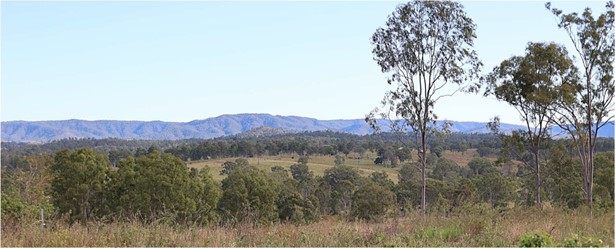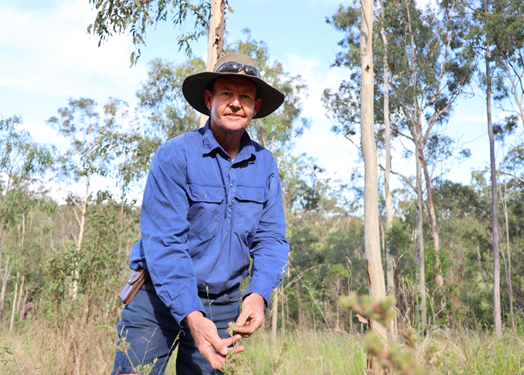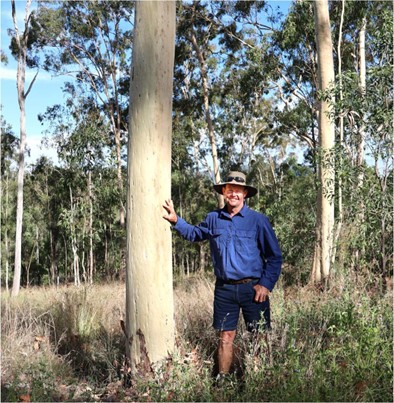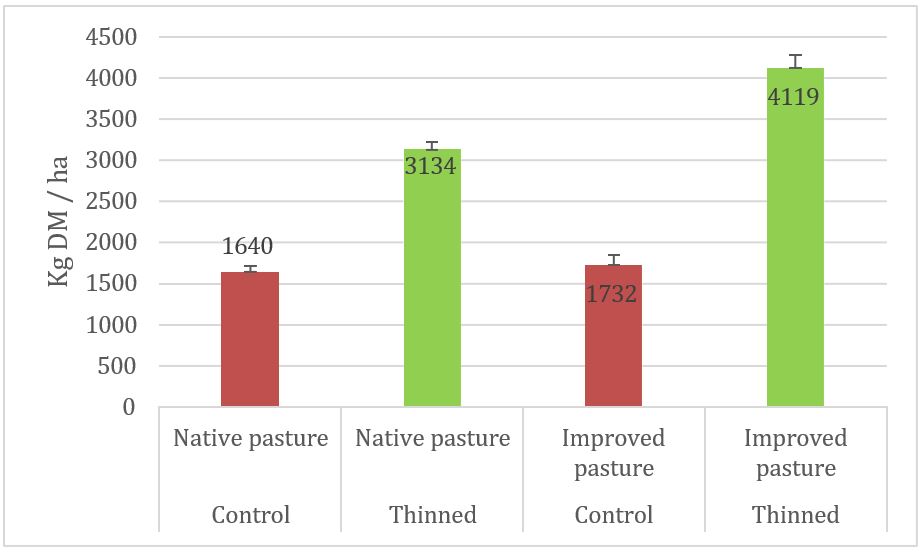Redefining beef production with silvopasture and rotational grazing
Introduction
Doug and Sue Campbell run a 5,000 hectare cattle property at Gaeta, near Gin Gin, Queensland. The property has been in the family for three generations, since 1923. Connection to the land and to the local community has been important to the Campbell family since those early days. There are regular BBQ catch-ups and an annual 22km cattle walk that people in the area get involved in.
The couple produces grassfed beef (Brahman x Angus and Charolais x Simmental) to the Grasslands Pasturefed Standard, participate in the Livestock Production Assurance (LPA) program and are registered with Meat Standards Australia (MSA). This means a commitment to high standards and regular audits. The Campbells’ beef is 100% grassfed and is produced without the use of hormonal growth promotants or antibiotics. Most products go to export, including to the European Union. As far as Doug and Sue are concerned, Australian producers grow the cleanest and best meat in the world, and they are keen to uphold these standards.
As well as beef production, the Campbells occasionally harvest timber from their property. The native forest on the property contains several commercially important tree species, including spotted gum (Corymbia citriodora subsp. variegata), ironbark (Eucalyptus crebra) and forest red gum (Eucalyptus tereticornis). While the native forest has been harvested several times, there has been little management of the trees in recent times, until the Meat & Livestock Australia and Queensland Department of Agriculture and Fisheries project commenced in 2020.
Silvopasture is the practice of integrating trees, pasture and the grazing of stock in a mutually beneficial way. In the Producer Demonstration Site project at Lundsville, the aim was to measure the impact of managing tree density on beef and timber productivity, and to demonstrate the opportunities of integrating pasture and sustainably managed native forests. The benefit of forest thinning is to allow the better trees in any given area to access the available light, water and nutrients to grow faster.

Sweeping view of the Lundsville property at Gaeta, near Gin Gin, Queensland.
Continuous improvement
Around 20% of the property is planted with improved pasture and legumes, which helps to keep the level of protein up to the herd. Native grasses such as black speargrass and Burnett bluegrass have a shorter window with high protein levels, which is why improved pasture and legumes are helpful. The cattle also help to spread the improved pastures seeds around, slowly but surely. Improved pasture species used as part of the Producer Demonstration Site project include signal grass, Rhodes grass, shrubby stylo, fine stem stylo, siratro and Caribbean stylo.
Around two years ago, the Campbells started to experiment with rotational grazing for their breeder herd, based on what they saw on neighbouring farms. The large paddocks were broken up into smaller paddocks, with help from a grant from the Burnett Mary Regional Group to install electric fencing.
Doug and Sue were surprised at how well the cattle handled the new system, even the older ones. Although it’s early days they have observed how rotational grazing helps to utilise the whole property, take pressure off the pasture and even to break the tick cycle.
Now that the infrastructure is in place and the cattle are used to being moved regularly it’s easy to manage.
“Rotational grazing means that you spend more time with the cows and learn their habits,” Sue said.
“I can muster 170 cows into the yards by myself, life is easier and there is less time spent on the horses mustering. The cattle are more settled now that they are educated in the new routine.”

Doug Campbell examining some of the improved pasture planted as part of the silvopastural trial.
Integrating timber with cattle
While cattle prices are fantastic at the moment, it’s not always like that. In the Campbells’ lifetimes they have seen some poor times and probably the best times too. However, there is always the risk that there will be another slump in the market in future and the availability to harvest timber in the tough times provides a secondary source of income.
In order to make the best of the timber resource however, the forest needs to be managed sustainably. That means silvicultural thinning, or removal of the defective and non-commercial trees, to maximise the growth of the best trees. Luckily that also benefits the pasture and the cattle.

Doug Campbell and a spotted gum tree, with improved pasture beneath.
Results from the silvopastural trials
Plots were established with two different forest treatments: thinned and unthinned. In the thinned areas, the trees with the highest potential to produce timber products (commercial species, straight, with minimal damage or branching) were selected and retained, and other trees were removed. The average initial stand density without thinning was 350 stems/ha and after thinning, this was reduced to around 95 stems/ha. The pasture in the demonstration plots also had two treatments: native and improved pasture.
In July 2022, 10 months after the improved pasture was sown and thinning was completed, the amount of pasture had increased markedly compared to native pasture under unthinned forest.

Tips for other producers
If other producers are thinking of managing their forests sustainably, Doug and Sue have some tips to share:
- Know your tree species and the value of the
- Get some advice from a group such as Private Forestry Services Queensland to learn which trees to keep and which to cut out. You need to get the stocking rates right and ensure that you retain several generations of trees.
- Go to field days, where you can chat to your neighbours about their Field days spark conversations on different topics, and you learn a lot.
- Learn how to manage trees and grass, you need the land to produce something while the trees are growing.
- Get involved in research projects if you can – learn from the experts and other
The future
The Campbells plan is to keep on going the way they are and to keep on learning and improving. As the cost of living continues to rise, it’s important to keep improving the land and getting the right balance between cattle and timber.
“Timber is an industry that will profit you in the end if you can manage the trees properly. It’s a continual cycle and it’s sustainable forever,” Doug said.



